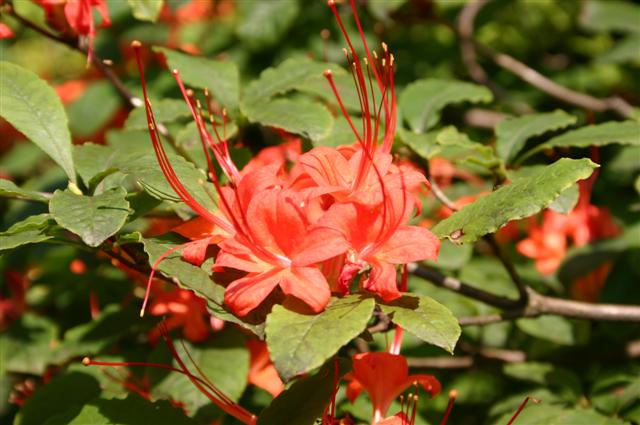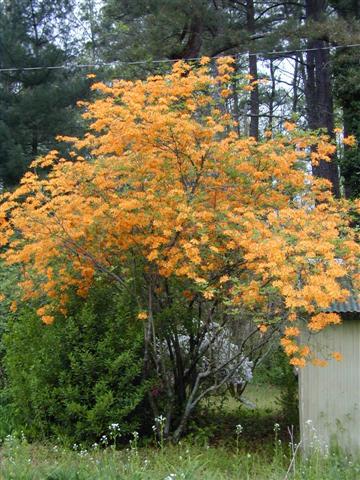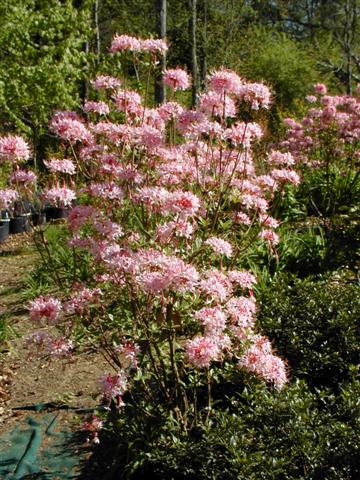
Check out our Services.
We're also offering a 10% discount
for February appointments

|
Need help? Check out our Services. We're also offering a 10% discount for February appointments |
| Plumleaf Azalea in late July |

|

|
| Florida Azalea (R. austrinum) | Piedmont Azalea (R. canescens) |
| Common Name | Botanical Name(s) | Bloom Season | Color | Fragrance |
| Piedmont | R. canescens | Early | White to Pink | Strong |
| Florida | R. austrinum | Early | Yellow to Orange | Strong |
| Pinkshell | R. vaseyi | Early | Pink | None |
| Canada | R. canadense | Mid | Pink to Purple | None |
| Oconee | R. flammeum
syn. R. speciosum |
Mid | Red to Orange | None |
| Pinxter | R. periclymenoides
syn. R. nudiflorum |
Mid | White to Pink | slight |
| Alabama | R. alabamense | Mid | White | Yes |
| Coastal | R. atlanticum | Mid | White | Yes |
| Roseshell | R. prinophyllum
syn. R. roseum |
Mid | Pink | Strong |
| Eastman | R. eastmanii | Mid | White | Yes |
| Flame | R. calendulaceum | Mid to Late | Yellow to Red | None |
| Swamp | R. viscosum | Mid to Late | White to Pink | Yes |
| Sweet | R. arborescens | Mid to Late | White to Pink | Strong |
| Cumberland | R. cumberlandense
syn. R. bakeri |
Late | Red to Orange | None |
| Plumleaf | R. prunifolium | Very Late | Red to Orange | None |